#Prince Skyline GT-B
Text

Not happy with the translation of this page but think i have it maybe 80 to 90% correct.
20th century NISSAN MOTORSPORTS
1958-2000
'60~
The infancy of domestic racing.
R381 and R382 win consecutive Japanese Grand Prix victories
The dawn of full-fledged motorsports in Japan
The origin of the visit dates back to the late 1950s, when a two-wheeled Asama Volcano race was held. As the 1960s entered, domestic motorcycle manufacturers began to win on the world GP stage, and Japanese industry became a reality on the world stage.
I proved it. The Suzuka Circuit was completed in the fall of 1962, and Japan's first full-scale automobile race, the 1st Japan Grand Prix, was held the following year in May 1963. Each automobile manufacturer, taking note of its promotional effects, soon formed a works team. Nissan selected powerful riders one after another, such as Kenjiro Tanaka, Kunimitsu Takahashi, Gen Kitano, Motoharu Kurosawa, Masahiro Hasemi, Kenji Tohira, Seiichi Suzuki, and Kazuyoshi Hoshino, and many of them went on to become main players in the domestic four-wheel racing world. It will reign for a long time.
Funabashi Circuit in 1965 and Fuji Speedway opens in 1966. Kanto and all over Japan
The racing fever is increasing. Just in time for Tokyo Motor Show.
The automobile industry was in a period of high growth before and after the pick-up.
It was a time when it made great strides as Japan's core industry.
Then, in 1966, Nissan and Prince merged, and Japan's first racing sports car “Prince R380”
will further evolve under Nissan.
In 1968, a large displacement engine with a unique huge wing was introduced.
The R381, with its powerful engine, and the R382 the following year defeated strong rivals to win the Japanese Grand Prix. And formula car races are held in Japan.
Fairlady/Skyline/Bluebird GT cars and Touring cars.
Many car races, as well as endurance races that included these races, were held.
Nissan also actively participated in overseas rallies.
At a time when the World Rally Championship did not yet exist,
Monte Carlo and Safari became the main battlegrounds.
The 1960s was the infancy of domestic racing.
It was a time of rapid evolution and growth. However, the issue of automobile exhaust gas became apparent in the 70s.
In early summer of 1969(?) , Nissan announced that it would be absent from the Japanese GP, and at that moment,
Domestic motor sports had only been growing until then.
The world was forced to seek a new direction.
2 notes
·
View notes
Photo


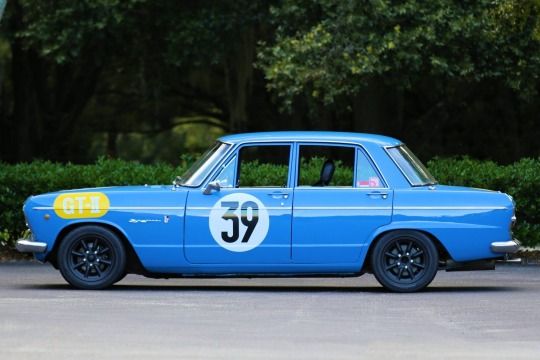

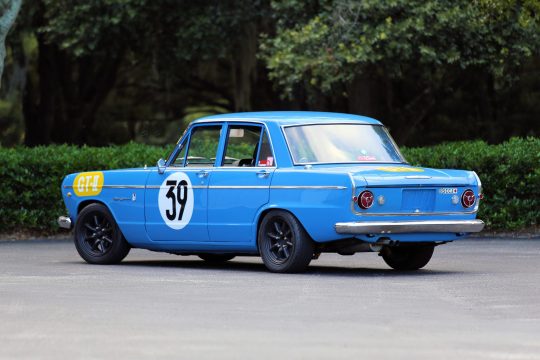

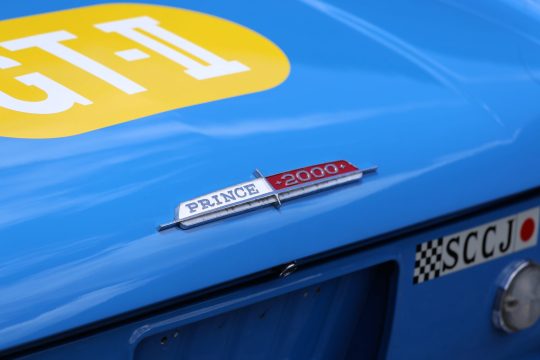
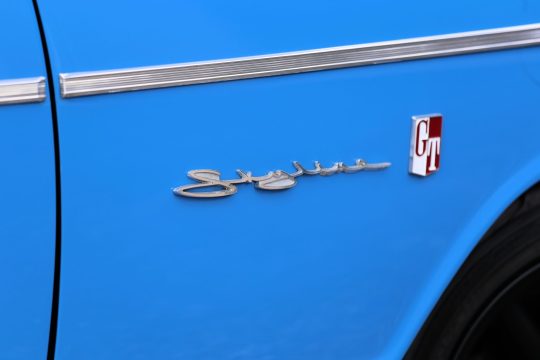

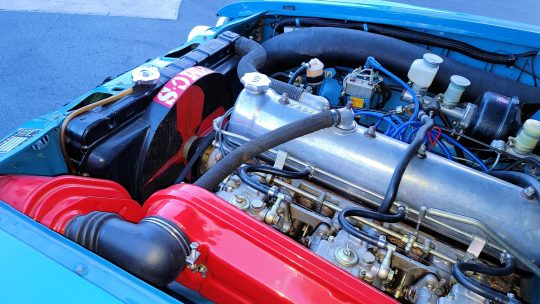
Prince Skyline 2000 GT-B
This 1967 Prince Skyline 2000GT-B has been modified as a backdated tribute of the #39 car campaigned by Yoshikazu Sunako in the 1964 Japan Grand Prix. Power is from a 2.0-liter G7 inline-six equipped with triple Weber carburetors and paired with a five-speed manual transmission. Additional features include front disc brakes, black vinyl Kameari GT bucket seats with Sabelt harnesses, bullet-style side mirrors, a push-button AM radio, Checkman steering wheel, Bilstein shocks, and black-painted RS Watanabe wheels. The right-hand drive cabin has been stripped of its carpets, door panels, and rear seats. Fixed-back bucket front seats are equipped with metal ventilation grommets and Sabelt harnesses. Custom metal floor plates have been installed, and a push-button AM radio and Jeco analog clock are mounted in the dash.
48 notes
·
View notes
Photo

Back in a former life, I had an addiction that I loved beyond sanity. Here’s the story of it.
2002 2003 2004 2005 2006 2007 2008 2009 pt1 2009 pt2 2009 Redux
This is the final spec list for my glorious, insane Brutal Truth.
Nissan Skyline BCNR33 GT-R (Type 2) manufactured in April 1996. JDM non V-Spec vehicle retailed through Osaka Nissan Prince in May/June 1996. Imported to the
UK in June 1997. Remained in original JDM spec without speedometer conversion until August 2002. Only the steering wheel & white dial sets were fitted in Japan.
Nismo RB26N1 bare engine: [N1 water pump (improved flow & less cavitation)/Reinforced cylinder block head bolt boss/Increased sump capacity (6L 20w60)/1.2mm oil restrictor]
N1 head with 0.5mm overbore (2598cc)
Cryogenically hardened N1 crankshaft
Wossner forged & cryogenically hardened pistons
Abbey Motorsport reinforced & cryogenically hardened con-rods
ACL Race Series conrod & crankshaft bearings
Tomei sump baffle kit
Tomei high flow (larger drive gears) oil pump
HKS 1.2mm metal head gasket
Tomei Procam Spec 2 cam kit (270 degree inlet & outlet with 10.25mm lift)
HKS V-Cam System Step 1 Type B (variable 248-278 degree inlet; replaces Procam inlet camshaft)
HKS vernier cam pulleys
HKS kevlar reinforced timing belt
Trust metal intake & throttle gaskets
HKS front pipe & decat gaskets
GReddy Iridium 08 Racing sparkplugs
Mocal 19-row oil cooler & Abbey Motorsport remote oil filter assembly
Abbey Motorsport catch tank & washer reservoir with SFS breather hoses
Abbey Motorsport Pro Alloy large radiator
Tomei fuel pump, fuel regulator & 600cc injectors
A’PEXi Power Intake induction kit
A’PEXi GT Spec intercooler (237x610x136mm) & hard pipe kit
HKS GT-SS turbos
HKS twin AFM delete kit
Tomei turbo elbows
HKS downpipes
HKS Silent Hi-Power exhaust
Abbey Motorsport 80mm decat pipe
Mine’s VX-ROM
HKS F-Con V Pro
HKS EVC 6 boost controller (1.6 bar)
AEM wideband lambda sensor
Splitfire DI Super Direct Ignition System
HKS Circle Earth kit
HKS GD Max twin-plate clutch (with lightened flywheel)
Abbey Motorsport rebuilt transfer box
Abbey Motorsport rebuilt gearbox with cryogenically hardened gear set, modified Nissan synchromesh upgrade and OS Giken strengthening plate
Abbey Motorsport rebuilt rear diff
Nismo gearbox mounts
Nismo Solid Shift gear stick (10% short shift)
Omex Shift Light Sequential
Sunsei SE-135 solar panel trickle charger mounted on a custom aluminium riser between the rear parcel shelf speaker enclosures.
Team Dynamics Equinox alloys 19x9.5, ET+15 in silver with polished stainless steel rim.
Falken FK452 265/30/19 Y-rated tyres
Cusco brake master cylinder brace
Cusco rear steering delete kit
Cusco front & rear upper suspension links
AST Sport Line 1 full suspension kit with UK spring setup
Nismo stainless steel braided brake hoses
StopTech 355mm rotor 4 pot caliper front brake kit
StopTech 355mm rotor 2 pot caliper rear brake kit with Abbey Motorsport modified pad retainers
Ferodo DS2500 brake pads front & rear
Bomex AD-390 front splitter
Nismo R34 smoked front indicators in custom aluminium mounting plates finished in crackle black
Nissan Xenon headlamp units
Border Racing Aero Fenders (vented front wings) with silver GT emblems from a R32 Skyline
Nismo smoked side repeaters
Top Mix one-off FRP twin blade rear spoiler on custom aluminium mounting plates
Entire exterior resprayed in BMW black (code 086) base and lacquer
Nissan Motorsport International carbon fibre B-pillar plates
PIAA carbon effect silicon wipers, front pair with spoilers, rear without
Nismo white face dial sets (dashboard & centre console) in carbon fibre panels
AEM AFR gauge mount replaces the lighter socket
HKS EVC display mounted on custom carbon fibre plate replacing the ashtray
Lighter socket relocated to the fog light switch panel
Nissan Momo steering wheel (with airbag)
Dressycar Nismo harness pads
Redline Automotive leather gearstick & handbrake gaiters
Abbey Motorsport carbon fibre door sill trims
Carbon fibre boot sill trim
Inlet plenum and sundry induction pipework finished in powder grey
Trust clear cam pulley cover
HKS Kansai Service carbon fibre spark plug cover
Right hand cam cover finished in crackle black
Nismo radiator & washer reservoir caps
HKS Kansai Service front strut brace finished in high gloss black
GReddy aluminium slam panel finished in crackle black
Tein bonnet dampers with black sleeves
Custom made one-off Cobra Misano Lux front seats: [Alcantara (colour code 9189) outers/Alcantara (colour code 9182) centre panels/One-piece carbon fibre backs/Sidewinder bases on custom subframes adapted by Abbey Motorsport/Cobra logo in silver thread on the headpads/GT-R logo beneath the grommets on seat backs]
JVC KD-AVX2 multi-media DVD/CD receiver with built-in 3.5” widescreen monitor
2x JL Audio Evolution VR600-CXi 6” speakers (front)
2x JL Audio Evolution TR650-CXi 6.5” speakers (rear)
Multiple and interlaced Thatcham rated security systems.
500 bhp. 520 ft/lb.
Ludicrously, hilariously, unbelievably fast.
Hope you enjoyed this little trip down memory lane with me. Cheers! JM.
(Photo by N. Liassides.)
#r33#bcnr33#skyline#gt-r#nissan skyline#Abbey Motorsport#HKS#Bomex#Tomei#A'PEXi#GReddy#Nismo#RB26N1#Mocal#Team Dynamics
12 notes
·
View notes
Photo
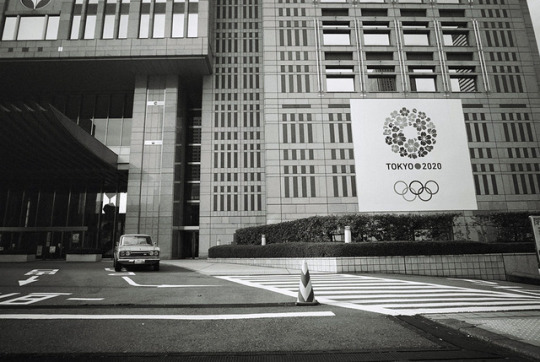
One more year to go.....
94 notes
·
View notes
Photo
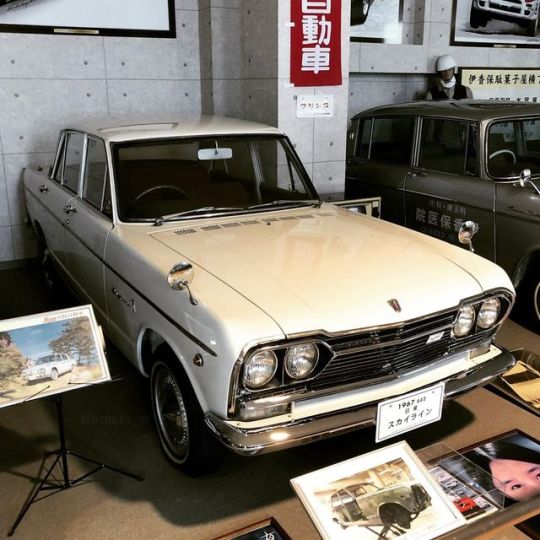
1967 日産プリンス・スカイライン S54 2000GT-A、GT-Bどっちだろう?😓 #NISSAN #PRINCE #NissanPrince #SKYLINE #日産 #日産プリンス #ニッサン #S54 #Skyline2000GT #GTA #GTB #SkylineSaturday #JDM #旧車 #伊香保おもちゃと人形自動車博物館 (おもちゃと人形自動車博物館) https://www.instagram.com/p/By-_oJhAEs8/?igshid=1ltcqp03dwko
#nissan#prince#nissanprince#skyline#日産#日産プリンス#ニッサン#s54#skyline2000gt#gta#gtb#skylinesaturday#jdm#旧車#伊香保おもちゃと人形自動車博物館
0 notes
Photo
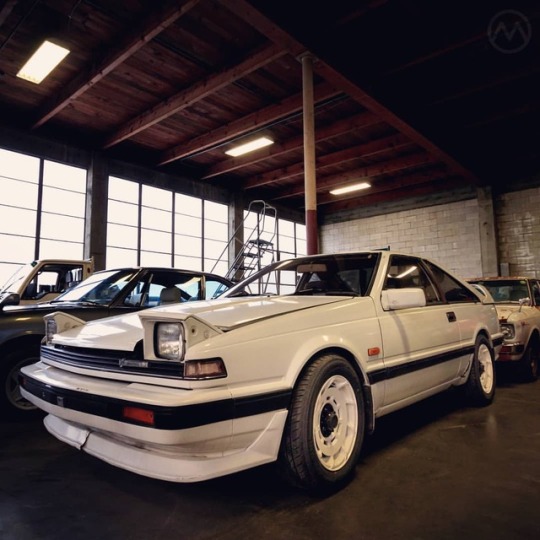
Small coupes had yet to be overtaken by SUVs in August, 1983, when Nissan’s #S12 Silvia first appeared. And of all the four-cylinder coupes you could buy at that time, it the turbocharged S12 was one of the best - a sharp handler that was appreciably faster than a Fuego Turbo or Celica GT-S, more modern than a Capri or Manta. - The #Silvia name had first appeared in the 1960s on a limited production coupe, but the mass-produced Silvias dated to the 1975 S10 Silvia, a fastback coupe based on the Datsun B-210. It was replaced by S110 Silvia for 1980, a more modern car that found wider acceptance but never went as fast as it looked. The S12, with a Turbocharged version now widely exported, was the first step towards the later Silvias of 1989-2002; now famous as drift cars. - The non-turbo versions remained worldwide, for those interested in looking sharp and getting decent mileage; but enthusiasts were captivated by the Turbos. In the U.S., the Silvia was called the #200SX and the ultimate version of it, the V6 powered 200SX SE, was sold only in 1987/88; but this particular car is a #JDM Silvia Turbo MK2 - the “2” denoting a very light mid-cycle refresh. - In typical #Japanese fashion at that time the model name depended on the market and Japan generally got more choices than exported cars though the V6 was not sold there. Originally, the basic turbo was the 1.8L CA18ET with 135hp from a Garrett T2. At the time, Japanese buyers who wanted to go even faster could opt for the FJ20ET 2-liter with 190hp shared with the Skyline 2000RS Turbo. That engine was retired in mid-1986 and the Silvia RS-X thereafter used the CA18DET with 166 hp from a Garrett T25. This @sodo_moto car is an early Mk2. - Japan also had a model called the Gazelle, functionally identical to the Silvia hatchbacks but sold through different sales channels - the reason for Japan’s zillions of different models. Silvias were for Nissan Prince Stores, Gazelles for Nissan Bluebird stores. Any store might offer accessories too, or you could easily find them in magazines like #CarBoy. In #eighties Japan, body kits and monochrome looks were all the rage, and this car wears an aero kit with wheels to match. (at SODO-Moto) https://www.instagram.com/p/BtlxFSkF-pa/?utm_source=ig_tumblr_share&igshid=1ha43c37cwloa
1 note
·
View note
Text
A Brief History of the Nissan Skyline and GT-R – Everything You Need To Know
The Nissan Skyline GT-R – Godzilla
When the name “Nissan Skyline” is mentioned it often brings another name to memory, that of Godzilla, a name given to the seemingly unbeatable 1989 Nissan Skyline GT-R in its 1990 racing guise, the NISMO GT-R, by the Australian motor press after its three consecutive Group A Championship wins from 1990-1992 topped off by two wins in the Bathurst 1000 in 1991-1992.
This had been a car that took not just the motor race, but the technology race squarely up against Porsche and their all wheel drive 959 in a successful effort to beat them at their own game. In order to optimize handling and best distribute the more than 600hp of the RB26DETT 2.6 liter twin turbocharged straight six cylinder DOHC engine Nissan’s engineers developed the ATTESSA E-TS all wheel drive system which used an electro-hydraulic clutch system to distribute that power between the rear and front wheels.
In the case of the racing Nissan Skyline GT-R the power distribution was primarily to the rear wheels until the power was such that they could not grip, at which time the extra horsepower was sent to the front wheels so all wheels maintained traction.
These were sophisticated examples of the best in automotive engineering, but they were actively evolved from a technological legacy that extended back into the 1960’s, and to a company named Prince, which was acquired by Nissan in 1966.
Prince, the Skyline Name, and a Penchant for Racing
Prince Motor Company were motivated towards motor racing both as a means to develop their car technology, and as a means to raise the public profile of their company.
One of the main driving forces in Prince was Shinichiro Sakurai, who had joined Prince as a chassis engineer in 1952 and was closely involved in the development of the original Prince Skyline. That first series of cars called the Prince Skyline were very conventional passenger car powered by a 60hp OHV in-line four cylinder engine and made in four door sedan and five door station wagon variants.
Shinichiro Sakurai would go on to be a driving force in the development of the Skyline GT-R up until his passing in 2011.
Dr. Sakurai began his journey in motor racing with the formation of the Prince Motoring Club in 1964, after a factory team of Prince Skyline S54 GT cars had suffered defeat in the Japanese Grand Prix that year. The Prince S54 was fitted with a SOHC G-7 1,998cc inline six cylinder engine, the engine that would form the basis for the later Datsun 510 and 240Z engines.
The Skyline S54 GT cars had been up against a Porsche 904 racing car that had been privately entered and, despite being outclassed by it, obtained second through to sixth places – but for Prince Motors there was to be no second place winner and work began on creation of their own Porsche 904 beating race car.
The Prince Motoring Club team including Dr. Sakurai got to work on a mid-engine racing car, in some respects similar to the Porsche 904 but built on a modified Brabham BT8 chassis. Into this proven racing chassis they installed a new variant of the G-7 engine, the DOHC double-valve 1,996cc GR-8 producing 200hp, and mated to a Hewland 5 speed racing transmission.
1966 was to be the year that four R380 cars were fielded at the Japanese Grand Prix against three Porsche 906. The result was what Nissan and the original Prince Motoring Club had hoped and worked for, first and second place.
It would be the last time the cars would race under the Prince banner however. Nissan acquired Prince that year but went on to further develop the R380, raising the engine power to 220hp, and redesigning the R380’s bodywork for optimal aerodynamics.
The Prince Skyline Sport and the Skyline 2000GT
There had been some sporty Prince cars bearing the Skyline name in the early 1960’s. Prince Motors understood marketing, and thus wanted to not only build cars that would get people’s attention but to actively put these cars into view in the most effective way possible.
To this end they turned to Italian designer Giovanni Michelotti (the man who also designed the Triumph Spitfire) and had him create a new and eye catching body for their otherwise rather ordinary looking S21 Skyline. By 1962 This new Skyline Sport (BLRA-3) was put into limited production both as a coupe and a convertible. These cars were fitted with a GB-4 1,862cc OHV engine producing a modest 94bhp @ 4,800rpm with 113lb/ft torque @ 3,800rpm.
Prince managed to get these Skyline Sport cars in a number of Japanese films by the Toho company thus raising the profile of the company’s cars in much the same way that the James Bond film “Goldfinger” made the Aston Martin DB5 a cultural icon and another Bond movie “You Only Live Twice” would similarly raise the profile of the Toyota 2000GT.
This Prince Skyline Sport is the car that began the journey that would result in the Skyline GT-R series of cars: it didn’t have awe inspiring power, but it did have style.
The S21 based Prince Skyline Sport was followed by the S54 based Prince Skyline GT of May, 1964. It was the racing version of this car that the Prince Motoring Club took to the Japanese Grand Prix of 1964 and finished second, beaten only by a specialist racing Porsche 906.
That second through to sixth place for the Skyline GT led to lots of enthusiastic people with open checkbooks looking eagerly in Prince’s direction and they did not disappoint these customers: they put the car into production.
The road car was called the Prince Skyline 2000GT and was made in two versions. The GT-A version had the designation S54A and was fitted with the 1,988cc G-7 six cylinder engine breathing through a single carburetor and producing 104hp. The high performance version was the GT-B, designated the S54B, with the engine breathing through no less than three dual throat Weber 40DCOE-18 carburetors and producing 123hp @ 5,600rpm, not a race car, but a lively performer by 1960’s standards.
The GT-B also featured a limited slip differential, five speed close ratio gearbox and servo assisted brakes. Both the GT-A and GT-B were fitted with dual piston disc brakes at the front and finned aluminum drums at the rear.
These cars were sold on the Japanese market, and also exported to Australia where there was a Prince dealership in the state of South Australia. In those export cars both the GT-A and GT-B were fitted with the high performance triple Weber carburetor engine, but the GT-A had a four speed manual gearbox while the GT-B was fitted with a German ZF five speed gearbox.
The First Generation Nissan Skyline GT-R “Hakosuka” (1969-1972)
The first of the Nisssan Skyline cars to wear the GT-R name was the C10 series which was developed by Prince at their Okikubo research and development center in Tokyo in 1968. The base model Nissan Skyline was introduced fitted with either the 1.5 liter Prince SOHC G15 inline four cylinder engine or optionally with the 1.8 liter G18.
There was also a sports model, the 2000GT, which was initially powered by a Prince G-7 SOHC 1,988cc inline six cylinder engine and then in September 1971 that was changed in the 2000GT-X model to an L20SU, from the same engine family as used in the Datsun 510 and 240Z.
The Nissan Skyline GT-R (model designation PGC-10) made her debut at the Tokyo Motor Show of February 1969. Costing almost twice as much as her more ordinary Nissan Skyline siblings the PGC-10 was fitted with an S20 inline six cylinder engine derived from the engine that had been used for the Prince R380 racing car.
This 1,989cc DOHC engine was originally fitted with triple Weber 40DCOE dual throat carburetors and tuned to produce 160hp @ 7,000rpm with torque of 87lb/ft. Later in October of that year the fuel system was changed to a British Lucas mechanical fuel injection: all that lovely power was sent to the rear wheels via a five speed manual all synchromesh gearbox.
youtube
Suspension of this first Nissan Skyline GT-R was independent all around with McPherson struts at the front and semi-trailing arms at the rear: a similar suspension to that used on the Nissan/Datsun 510 and later 240Z. Like the Datsun 510 and 240Z this intelligently designed fully independent suspension gave the Skyline GT-R stable handling, even when the going got rough, making it a car that could be driven to its limits with confidence.
From 1969 up until 1971 this Nissan Skyline GT-R was made as a four door sedan and then in March 1971 a two door coupé was also made available (the KGPC-10). The car performed well in competition with the sedan version gaining thirty three wins in less than two years and the coupé another seventeen.
Japanese car enthusiasts nicknamed the car Hakosuka (ハコスカ), which is a condensation of “Skyline Box” in Japanese: hako (ハコ) translates as “box” and suka(スカ)being a contraction of Sukairain (スカイライン) which translates as “Skyline”. So the “Hakosuka” made the name Nissan Skyline GT-R something of a household word.
Second Generation Nissan Skyline GT-R “Kenmeri” (1972-1977)
The 1972 Tokyo Motor Show saw the debut of the successor to the C10 “Hakosuka”: the C110 Nissan Skyline. The 1,989cc S20 inline six cylinder engine with its heritage in the Prince R380 racing car, and five speed gearbox migrated from the GPC-10 into the new and quite different looking bodywork of the C110.
The Nissan Skyline C110 series were made in the same body styles as its predecessor, four door sedan, five door station wagon, and coupé. In export markets the model was sold as the Datsun K series and it appears to have been a very popular model.
The popularity is often attributed to the Nissan advertising campaign which featured “Ken and Mary” and this resulted in the model being dubbed the “Kenmeri”.
The GT-R version made its debut in September 1972 but with the impact of the worldwide oil crisis production of the Skyline GT-R was ended in March 1973. The KPGC110 Nissan Skyline GT-R was fitted with the tried and proven S20 DOHC inline six cylinder engine as used in the first generation cars, with five speed manual gearbox.
Only 197 of these cars were sold in Japan and they were not exported. Nissan withdrew from motor racing and this second generation Skyline GT-R would be the last for a period of years.
The Nissan Skyline R30 “Tekkamen” (1981-1985)
During the years that followed the oil crisis the Skyline GT-R name would be absent, while Nissan continued to make a quite ordinary cars for everyday use, some more stylish than others. The R30 series was introduced in August of 1981 and offered with a variety of four and six cylinder engines, generally shared with other Nissan/Datsun cars.
Body styles expanded from four door sedan, station wagon, and two door coupé to include the new three door “hatchback” style which was becoming popular around that time. The R30 could be had in luxury versions, including one powered by an L20ET SOHC turbocharged engine and there was also an FJ20 DOHC double valve four cylinder engine, the first production four valves per cylinder engine from a Japanese maker.
Added to this were simple economy engines and an LD28 inline six cylinder diesel: diesel engines were becoming moderately popular due to their good fuel economy, and in places such as Australia because diesel was the fuel of choice for primary producers.
The most notable model during the R30’s production life was the Nissan Skyline 2000RS which appeared on October 2nd, 1981. This model was designated the DR30 and was powered by a conventionally aspirated FJ20E four cylinder DOHC 1,990cc engine with electronic fuel injection (as identified by the “E” suffix to FJ20E).
The car was a stripped down lightened Skyline which weighed a modest 2,491lb and with the engine developing 148hp @ 6,000rpm and 133lb/ft torque @ 4,800rpm it was a lively performer. This was only to get better in 1983 when the model was upgraded with a turbocharged version of that same engine, the FJ20ET (the “T” suffix denoting Turbocharged). The turbocharged model was badged the Nissan Skyline 2000RS-Turbo and the engine now produced 188hp @ 6,400rpm with 166lb/ft torque @ 4,800rpm.
The Nissan Skyline 2000RS-Turbo was fitted with the most powerful Japanese production car engine of that period and the car was kept lightweight so it could use that power to good advantage.
Once the Skyline 2000RS-Turbo had established its performance street cred it became a desirable car and this curiously resulted in Nissan deciding that it was a “top of the line” model and therefore should have luxury features such as electric windows, air-conditioning and power steering, and a electronic driver’s seat with power lumbar support, all of which added to its weight bringing it up to 2,723 lb and of course causing performance to decline.
This was the Nissan Skyline RS-X model, the “X” denoting “eXtra”: extra luxury, extra weight, and not so fast or clean handling as its nimble predecessor. This car was given a new front end styling treatment which led to it being nicknamed “Iron Man” (Tekkamen (鉄仮面)) after the superhero character whose mask the car’s front end resembled.
For 1984 the car’s engine was fitted with an air-to-air intercooler which enabled the compression ratio of the engine to be increased from 8.0:1 to 8.5:1 boosting its power to 202hp @ 6,400rpm and torque to 181lb/ft @ 4,400rpm. This model was called the Nissan Skyline 2000RS-Turbo C and the extra power helped to restore the performance of the car while keeping the luxury extras.
This car was the basis for the GT-R works Super Silhouette racing car which ran in the All Japan Sports Prototype Championships, the car being sponsored by Japanese toy maker Tomicar. The Nissan Skyline 2000RS-Turbo C was also the basis for the cars that competed in the 1986 Australian Touring Car Championships winning four of the six races, and the Australian Endurance Championship, finishing in second place to a BMW 635 CSi. Nissan won the 1986 Manufacturer’s Championship and drew with BMW for the following year.
The combination of having the 340hp DR30 Nissan Skyline 2000RS racing cars becoming something of a cult car in Japan and their string of competition successes paved the way for Nissan to decide that resurrecting the GT-R model might just be a good idea.
The oil crisis was passed, people had figured out that we were not likely to run out of oil any time soon, and there were people with fat checkbooks wanting a Skyline GT-R. Not only that but there were children playing with their Tomicar model Skyline GT-R’s who would grow up to have a salary, a checkbook of their own, and a desire to own a twelve inches to the foot scale model GT-R that they could jump into and drive and get speeding tickets of their own in.
1984 was the year Nissan decided to merge its existing two motorsport departments into a new entity called “Nismo” which was an abbreviation for Nissan Motorsport International Limited. This new entity would be responsible for creating a range of competition cars, tuning kits, and campaigning in motorsport events.
The R31 2000 GTS-R (1985-1987)
The R31 series of the Nissan Skyline would introduce new technologies, technologies that would greatly enhance the coming generations of the Skyline GT-R models.
The R31 series introduced the new RB engines in both SOHC single valve and DOHC iterations. The RB engines were derived from the Nissan L engines as used in the Datsun 510 and 240Z, which were based on a Mercedes-Benz engine which Prince made under license and then developed into a new design of their own.
A new steering technology made its appearance in the R31 Nissan Skyline cars: High Capacity Actively Controlled Steering (HICAS) which provided rear wheel steering to compliment the conventional front wheel steering. The HICAS system as first used in the R31 Skyline used hydraulics connecting the front to the rear to provide the rear wheel steering.
This was speed sensitive and used the vehicle’s speedometer to determine the nature of the rear wheel steering to provide: at low speeds the rear wheel steering was optimized for close maneuvering, at higher speeds for highway stability and cornering.
The R31 series of Nissan Skyline models included cars at varying levels of performance from utilitarian and economical to more luxurious, and to higher performance. At the top of the performance models were the Nissan Skyline 2000 GTS cars which first appeared in August 1985. From thjis model would come the successor to the Skyline 2000RS racing cars, the Skyline GTS-R coupé.
The Skyline 2000 GTS saw a move from the DOHC turbocharged four cylinder engine of the 2000RS cars to a DOHC six cylinder. This new engine was the RB20DET and it featured twin cams because it had double valves, and an intercooled turbocharger. Power output was 212hp @ 6,400rpm with a solid amount of torque, 195lb/ft @ 3,200rpm, perfect for the road going GTS and luxurious GTS-X.
The Skyline GTS-R coupé was a very limited production car that made its debut in late 1987, with just 823 made. This model was only put into production to provide the homologation necessary to enable the car to compete in Group A Touring Car racing.
This racing car’s engine featured a larger turbocharger on a tubular steel exhaust manifold, and a larger front mounted intercooler. This racing engine produced over 430hp and would prove itself to be a competitive Group A competition car down in Australia where Jim Richards and Mark Skaife campaigned in a Skyline GTS-R coupé that had been race prepared by Gibson Motor Sport in the 1989 Sandown 500, and then went on to win six out of eight races to win the 1990 Australian Touring Car Championships.
Third Generation R32 GT-R (1989-1994)
The Nissan Skyline R32 series moved to be more sporting rather than utilitarian. The body styles were limited to either four door sedan or two door coupé.
The smallest engine option for the R32 Skylines was the 90hp 1,800cc RXi inline four cylinder fitted to the GXi model. The remaining cars were powered by the RB series of inline six cylinder engines fitted with the ECCS (Electronically Concentrated Control System) electronic fuel injection. R32 models were fitted with the HICAS rear steering system, at this stage of development still hydraulically operated.
Other than the four cylinder GXi the other Skylines featured “GT” in their names; the GTE with a 2.0 liter 123hp engine, the GTS Type X, S and J with a 2.0 liter 153hp engine, the GTS-25 Type X, S and SG fitted with a 2.5 liter 178hp engine, the GTS-t, Type-M fitted with a 2.0 liter RB20DET turbocharged 212hp engine as used on the Skyline 2000 GTS, the Autech GTS-4 fitted with a 2.6 liter RB26DE 217hp engine and also equipped with Autech all wheel drive (of which only 188 were made), and the GT-R fitted with the 2.6 liter RB26DETT twin turbocharged engine and also equipped with all wheel drive.
The RB26DETT engine was stated by Nissan to produce 276hp but this was an understatement: Japanese car makers had a “gentleman’s agreement” not to quote a power of more than 280PS (i.e. 276hp), the actual power output of the RB26DETT engine was 316hp but as set up for the road cars the ECU and exhaust turbocharger boost restricted the available engine power. In race tune the engine would deliver in the order of 500hp.
Nissan were by this stage very much back into motorsport and the R32 Skyline GTR was designed from the ground up with the rule book for Group A racing in the hands of the design team, led by Chief Engineer Naganori Ito. Thus the car was purpose built and it was built to ensure it would defeat Nissan’s main opponent, the Porsche 959. The car was so perfectly purpose built that it would lead to the demise of Group A racing and its substitution with other touring car events.
The GT-R was made to go quickly from the ground up, wheel arches were flared to accommodate the wider wheels and tires, the intercooler was enlarged to cope with the increased turbocharger temperatures, the brakes were enlarged and the car was strategically lightened with aluminum front guards and hood/bonnet. As the GT-R was a road going high performance car the seats were made more supportive both for comfortable touring and for comfortable support during enthusiastic cornering.
The car was also fitted with a new version of Nissan’s ATTESA all wheel drive system. ATTESA stood for Advanced Total Traction engineering system. The version used for the GT-R was a more advanced E-TS ATTESA design but it added 220lb/100kg to the car’s weight.
The additional weight necessitated Nissan moving the GT-R up into the 4,500cc racing class and so they increased the engine capacity of the GT-R to 2.6 liters so that with the turbocharging of the engine they could obtain a competitive 599hp from the engine. The car’s instrumentation included the usual essentials for monitoring engine state but also included a gauge to indicate the ratio of engine power being delivered to the front and rear wheels by the ATTESA system.
We should remember that the Japanese have a well deserved reputation for being perfectionists as was evident when they took the idea of the two handed saber and perfected it into the Japanese “Nihon To” Japanese sword, perhaps the most refined sword on earth. So we can imagine what would happen if a group of perfectionist Japanese engineers got together with the Group A rule book to build the perfect Group A racing car. The results speak for themselves. A Skyline GT-R was taken to Germany’s Nürburgring for an attempt at the 22.81km (14.173 miles) Nordschleife (North Loop) lap record, which stood at 8’45” and was set by a Porsche 944. The Nissan Skyline GT-R lapped the Nordschleife in 8’20” with Japanese driver Hiroyoshi Katoh putting the pedal to the metal. It was a foreboding of what the Skyline GT-R was going to accomplish in motor racing.
From 1989-1993 the Nissan Skyline GT-R’s won the Japanese Touring Car Championship every year, winning 29 out of the 29 races they started in. For the Group N competition, which limited modifications to the cars so they had to be “Showroom Class” standard cars, the GT-R won 50 races out of 50 they started in the N1 Super Taikyu (i.e. Super Endurance) competition from 1991-1997.
The Nissan Skyline GT-R’s were taken “down under” to Australia’s famous Mount Panorama racing track located in the town of Bathurst, New South Wales, where they proceeded to win the annual Bathurst 1000 race in 1991 and 1992. This led to the pretty little Skyline being dubbed “The monster from Japan”, Godzilla. It was during 1991 and 1992 that the plans were put in place in Australian motor sport to create the “V8 Supercars” competition which would favor the domestically produced GM Holden and Ford cars which had previously carved out a legend for themselves at Bathurst’s Mount Panorama.
This competition has survived up until the present day and the races are quite spectacular. We wonder how a 1993 Nissan Skyline GT-R would fare against one of the current V8 Supercars, it would be an interesting one-on-one contest, best done on Mount Panorama.
youtube
In 1993 the Group A rules were changed to increase the allowed wheel size from 16″ to 17″, which led to the creation of the Skyline GT-R V-Spec cars in February of that year, fitted with 17″ BBS mesh wheels and the larger disc brakes with Brembo calipers the bigger wheels permitted. Wider 245/45 17″ tires were fitted for 1994 in the revised model, the Skyline GT-R V-Spec II. The “V” coincidentally stood for “Victory” as one would expect.
“Godzilla” had monstered the competition and also prompted the ruling bodies to change the competition rules: the Skyline GT-R had certainly made its mark.
Fourth Generation R33 GT-R (1993-1998)
With its image established as a sporting car the R33 Nissan Skylines were kept quite close to the concept of the successful R32 series. The new R33 was about an inch wider and four inches longer than its predecessor, and it gained some mandatory safety equipment, notably airbags, and internal crash bars.
Despite being physically a little larger Nissan’s engineers worked to reduce weight wherever possible to compensate for the additional weight created not only by the size increase but also by the additional safety equipment that had to be installed. The strategies used to decrease weight included using more sophisticated metallurgy with regards to the steel being used in body construction, hollowing out side door beams and the rear anti-roll bar, use of plastics for such items as the fuel tank, and use of lighter sound deadening materials.
Great attention was also put into the aerodynamics of the new model both to make it slip through the air more easily and to improve its stability by giving it more down-thrust as the speed increased. The R32 had suffered from some problems associated with lift at speed and so these problems were addressed in the R33.
Nissan did some reshuffling of its model line-up for the R33 family of Skylines. All bar one of the models were given “GT” in their names. The models were; the HR33 GTS fitted with a 2.0 liter inline six cylinder RB20E SOHC producing 128hp and torque of 127lb/ft, or fitted with the more powerful version of the RB20E engine producing 153hp with torque of 142lb/ft. Next was the ER33 GTS-25 which was fitted with the RB25DE DOHC inline six cylinder engine producing 187hp with 170lb/ft of torque: the ER33 GTS was also made with all wheel drive as the Skyline ENR33 GTS-4.
Moving up in the power stakes the next model was the ECR33 GTS-25t: this was fitted with the turbocharged RB25DET engine producing 247hp and 217lb/ft of torque. The naturally aspirated RB25DE and turbocharged RB25DET engines were fitted with a Nissan Variable Timing Control system, which was called NVCS for this engine.The most powerful of the R33 series curiously was not called a GT but was the ECR33 P.Ride 280 MR with the 2.8 liter turbocharged DOHC RB28DETT producing 296hp.
The GT-R models benefited from the detail engineering that went into making them as light as possible, with the base model Skyline GT-R tipping the scales at 1,540 kg (3,395 lb) while the GT-R V-Spec was 10kg (22lb) heavier. The attention to making the vehicle as light as possible had in part been made necessary because of the Japanese government regulations which limited engine power to 280PS: so in order to make the GT-R faster, the power to weight ratio had to be improved.
With these improvements a R33 GT-R was taken to Germany’s Nürburgring for a new attempt at breaking the record on the Nordschleife (North Loop) lap record. The new R33 GT-R did not disappoint putting down a lap time of 7’59”, while a GT-R V-Spec car managed 7’57”. Nissan was not able to use the R33 GT-R to dominate motorsport in the way they had with the R32 in Group A. They made a showing at the 24 Hours Le Mans in 1995 with two purpose built race cars, with one finishing fifth in class and tenth overall, while the other suffered a gearbox failure.
This quite successful attempt at Le Mans was celebrated the following year, 1996, with a NISMO GT-R LM model fitted with some carbon fiber panels and painted in “Champion Blue”. The LM version was also made in an even higher performance V-Spec version.
Other limited production models were also made including the 40th Anniversary of the GT-R four door GT-R which was first made by Autech, and then a second by Nismo and Autech working in collaboration. There was also a Nismo 400R with such features as some carbon fiber body parts, a 400hp engine, and twin plate clutch to cope with those four hundred enthusiastic horses.
The four main versions of the GT-R were; the base GT-R fitted with the RB26DETT twin turbocharged 2.6 liter inline six cylinder engine producing 301hp (although advertised as only 280PS) with 277lb/ft of torque. This model was fitted with the ATTESA-ETS all wheel drive system and the improved electronic Super HICAS all wheel steering system.
The next model was the GT-R LM fitted with the same engine but without the all wheel drive feature: so it was a conventional front engine rear drive car. The next model was the Nismo 400R which was fitted with the 2.8 liter RBX-GT2 DOHC twin turbocharged inline six producing 395hp and 353lb/ft torque, and fitted with the all wheel drive system. Last but by no means least was the rare 4 door GT-R Autech Version four door 40th Anniversary car fitted with the RB26DETT DOHC inline six as used on the GT-R and GT-R LM producing 301hp and 277lb/ft of torque, but again advertised as producing 280PS.
Only 400 of these four door 40th Anniversary models were made but they were, of course, the perfect car for a family man with a bit of a Jekyll and Hyde personality.
Fifth Generation R34 GT-R (1998-2002)
When we look back to 1998 we see that personal computers and the Internet were making their way into people’s lives, this sort of technology was becoming fashionable. Microsoft introduced their new operating system “Windows 98” to replace Windows 95, while the world’s number one Internet search engine was AltaVista: Google was not yet a dominant force.
This digital technology was finding its way into many areas of our lives and it found its way into the cars from the Land of the Rising Sun quickly. Japan, Korea and Hong Kong were among the places where this sort of technology achieved rapid market penetration.
The Nissan Skyline was one of the early cars to implement digital technology with a pop-up digital display on turbocharged models. The turn of the millennium, as people worried of a global collapse caused by the “millennium bug” the Skyline was given the option of state of the art Xenon headlights. The R34 engines were built with Nissan’s new NEO technology, which was Nissan’s Ecology Oriented valve lift and timing, a system intended to optimize engine performance and minimize pollution by maximizing efficient fuel use.
The R34 models were the base model GT fitted with an RB20DE NEO whose inline six cylinder produced 153hp with 137lb/ft torque, the 25GT, 25GT-X, 25GT-V, 25GT-FOUR, and the 25GT-X FOUR, all fitted with the RB25DE NEO engine producing 197hp and 188lb/ft torque.
Going up the power scale came the 25GT Turbo and 25GT-X Turbo fitted with the RB25DET NEO six cylinder turbocharged engine producing 280hp and 253lb/ft torque. These models came with various optional extras including more aerodynamic body kits, improved brake, suspension and performance parts. All GT-R models were fitted with the all wheel drive ATTESA E-TS Pro AWD system.
The new R34 Skyline GT-R versions made their debut in 1999 and sported a display unit at the top of the dashboard called the “MFD” (Multi Function Display). This display replaced gauges and provided information such as turbocharger boost pressure, oil and water temperature, and the G-force acceleration the car was under at any given time. The system also incorporated a “lap timer” with control located just by the gear lever.
The R34 Skyline GT-R models were; the base GT-R fitted with the RB26DETT 2.6 liter twin turbo inline six cylinder producing 327hp and 289lb/ft of torque: the engine power being advertised as being just 280PS/276hp.
There was a veritable plethora of derivative models, albeit almost all fitted with the same engine, these being; GT-R V-Spec with different aerodynamic body kit parts, different brake ventilation ducting, a diffuser, and an active limited slip differential (ALSD).
Next came the GT-R V-Spec N1 which came with a blueprinted N1 engine: this car was a stripped down speed machine for the adrenaline enthusiast and had no air-conditioning, no stereo sound system (because the sound of the engine was music enough), no rear screen wiper, and a spartan interior trim. The next model was the GT-R V-Spec II which was the same as the V-Spec N1 but with a carbon fiber hood/bonnet fitted with a NACA duct: this model was also made as the GT-R V-Spec II N1, again with the same Spartan fittings.
Following on from the purist performance oriented cars Nissan understood that there were customers who liked their adrenaline served up in stylish comfort and so the GT-R M-Spec featured leather seats, less sporty more comfort oriented suspension with “Ripple Control” shock absorbers, and heated seats so the driver could be warm and cozy while enjoying their enthusiastic driving.
The GT-R V-Spec Nür and GT-R M-Spec Nür continued with the “enter the comfort zone” luxury speed and both were fitted with 300 km/hr speedometers. The other two models were the GT-R NISMO S-Tune and R-Tune which were the derived from the M-Spec but with some style differences.
Last of the comfort GT-R’s was the GT-R NISMO Z-tune which was fitted with a bored and stroked 2.8 liter RB28DETT twin turbocharged version of the inline six cylinder engine pushing out no less than 493hp and 398lb/ft of torque for drivers with a significant dose of Mr. Hyde in their personality and having strong neck muscles to cope with the rather brisk acceleration. the Z-tune’s standing to 100km/hr time was just 3.8 seconds and its top speed was in excess of 327km/hr.
Only nineteen of the Z-tune cars were made so they have the potential to attract some significant collector value. These cars were made from second hand R34 GT-R V·Spec cars which were completely stripped down and rebuilt using functional components from Nissan’s racing cars, and the engine revised so it was able to get up to 8.000rpm.
Not only was the engine redesigned but the suspension also. The body was strategically reinforced with seam welding in key areas such as around the door frames and use of carbon fiber reinforcing. These were the ultimate R34 Nissan Skyline GT-R cars ever made.
Sixth Generation R35 GT-R (2002-Present)
For the sixth generation of the GT-R Nissan decided to separate the GT-R from the Skyline range of vehicles. This Nissan GT-R was the first to be exported to the United States and marked a distinct separation from the legacy of the previous cars which traced their lineage back to Prince Motors and the R380 racing car.
This new generation GT-R was given a new 3.8 liter V6 engine, the VR38DETT, and while the HICAS all wheel steering was not carried forward into the new model the ATTESA (Advanced Total Traction Engineering System) in a new improved form was very much a part of the new look, and new performance GT-R.
The 3.8 liter V6 engine now churns out an elegantly sufficient 565hp in the standard model and that increases to 600hp for the specialist Nismo model. The R35 GT-R boats a top speed of 310km/hr (193mph) and standing to 60mph time of just 3.2seconds, so it accelerates slightly faster, and has a top speed almost as fast as the very limited production R34 GT-R NISMO Z-tune cars: it is the fastest standard production GT-R ever produced.
The R35 GT-R is every inch a twenty-first century automobile with extensive use of digital technology in the car’s engine and transmission systems, including an active limited slip rear differential controlled by the ATTESA system. The digital display inside the car was created by the programmers who created the “Gran Turismo” video game, bringing video game graphics to the car’s dashboard.
Conclusion
The Nissan Skyline series of cars came from humble beginnings in the post-war era, as the economical Prince Skyline with a 60hp OHV four cylinder engine, and it developed into the current Nissan GT-R with a twin turbocharged engine that develops fully ten times that power level in the Nismo version.
The story of the Skyline’s journey from small car to a digital technology enriched super-car is complex, and it is a tribute to the nation that created it: a nation that prides itself on attending to every fine detail to produce the most refined result possible. Back when I was training the Japanese sword I was visiting Tokyo and one of the sword club members at one stage said to me “for a Japanese what is not seen is just as important, perhaps even more important, than what is seen”.
This was the sort of thinking that led to the technological advances that the Nissan Skyline GT-R cars epitomized, as evidenced by the GT-R being dubbed “Godzilla” by the Australian motoring press: it was at that time the “unbeatable monster from Japan’. Although it was a rather pretty “monster”, don’t you agree?
Photo Credits: Nissan, Prince, RM Sotheby’s.
The post A Brief History of the Nissan Skyline and GT-R – Everything You Need To Know appeared first on Silodrome.
source https://silodrome.com/nissan-skyline-gt-r-history/
0 notes
Text
In Photos: Favorites from Nissan’s Zama Heritage Collection
In a nondescript building on the grounds of a large manufacturing facility, Nissan’s heritage collection of more than 300 vehicles gleams under bright overhead lights. It’s a stunning gathering of important cars from the company’s history, and it makes the somewhat confusing and chaotic journey very, very worth it.
The museum is located roughly 30 kilometers outside of Yokohama, Japan, and getting to the facility involves myriad alleyways, backroads, and battles with bicyclists. Once you pull inside the main parking area, another drive and keen eyes are required to locate a small lot with a small sign indicating you have arrived.
The reason the museum is difficult to find is simple: It was only made public quite recently. The staffers have been busy upgrading the facility to make it more accessible, and we are told things improve daily—perhaps by the time you visit, the signage will be more prominent. The collection encompasses row after row of restored and original-condition cars, trucks, race cars, and more, and it’s frankly hard to tell where to begin. But we made it through, and here we present our 10 favorites:
1938 Datsun 17T Truck
We started by viewing a row of early 1930s and 1940s Datsun trucks. The 1934 model was called the Datsun 13, and it was followed by the 14, 15, and 17; there was no 16 due to the outbreak of the second Sino-Japanese war. During Japan’s involvement in WWII, no cars were produced, with factories instead being instructed to make trucks and commercial vehicles. This meant the Datsun 17 was produced from April 1938 through January 1944. It was then replaced by the Datsun 1121 and 2124 trucks.
This truck was designed to be a two-seater and was powered by the same 15-hp, 722cc engine used in Datsun passenger cars. The T was really just a reworked version of the 17 with its build and specifications mandated by a lack of resources during the war, such as the use of one color for the body.
It has an overall length of about nine feet (3,020 mm) and an overall width of about four feet (1,197 mm)—compare that to a 2019 Ford F-150, which can be as long as 21 feet overall and just over seven feet wide. Go ahead, put this early Datsun truck in the F-150’s bed.
1961 Datsun Fairlady Sports SPL213
When people think of the Nissan Fairlady, some version of the Z car often springs to mind. This one, however, is really the Z’s granddaddy—it was the first U.S.-market Nissan sports car. It was launched in 1960 as the Datsun Sports 1200 (SPL212) and was only slightly revised for the 1961 model year. Both were called Fairladys and rumor has it Nissan President Katsuji Kawamata chose the name “Fairlady” after watching My Fair Lady while visiting the U.S. in 1961. Just 217 of this particular car were built, but it left an impression and the Fairlady name would carry on for decades.
1963 Datsun Fairlady 1500 (SP310)
Just a few years after its introduction, the Fairlady was entered into the first Japanese Grand Prix—it was held as a sports-car race, and then other types before F1 took over in 1976—in May 1963 at the Suzuka Circuit southwest of Nagoya. This race marked the beginning of racing interest in Japan, and the 1963 Datsun Fairlady 1500 won the B-II race and quickly cemented a reputation for being an authentic sports car even though the car featured a nonoriginal Cedric engine.
1966 Prince R380A-1
With large No. 11 stickers, the Prince R380A-1 was created to beat Porsche, the champion of the second Japanese Grand Prix in 1964. Developed by Prince Motors prior to it merging with Nissan in the same year as that race, it accomplished its mission and won the 1966 Japanese Grand Prix. It’s also worth noting the R380A-1 chief engineer was Shinichiro Sakurai, who became famous for engineering several generations of the Skyline.
1969 Fairlady Z432
Wearing a striking mustard color, the 1969 Fairlady Z was how it all began: This was the first of the Z sports cars Nissan would become famous for building. The mirrors on the fenders, the inset headlights, and the flowing roofline and rear end are all hallmarks of vintage Zs, which differed slightly for the U.S. and Japanese domestic markets. In Japan, it continued to be badged as the Fairlady to keep it in line with the prior-generation Datsun Sports roadsters. This particular model with its Z432 distinction was known as the high-performance version; the 432 refers to the S20 engine’s configuration (4 valves, 3 carburetors, and 2 camshafts).
1989 Nissan Pao
While the museum is filled with sports cars, there are some other more whimsical vehicles as well—like this 1989 Nissan Pao with a canvas roof. Often known as the “Pike car” due to its production at the Pike factory, this 51-hp hatchback was built from 1989 through 1991 as a retro-styled vehicle that featured external door hinges, a split tailgate, chrome luggage rack, and flip-up windows to evoke the simple European small cars of the 1940, ’50s, and ’60s. Power came from a 1.0-liter four-cylinder hooked to a three-speed automatic or five-speed manual. The first run sold out in just three months, and as part of Nissan’s retro car line of the early 1990s, it enjoys quite a cult following today.
1989 Nissan S-Cargo
Another vehicle from the same line as the Pao is the 1989 Nissan S-Cargo, which is actually taller than it is wide. The name is meant to stand for both Small Cargo and as a nod to the snail-like styling—escargot is the French word for “snail,” you see. The run of Escargots was small—8,000 or so—and each featured a 75-hp, 1.5-liter four-cylinder mated to a three-speed automatic. Other models in the retro line include the Figaro and Be-1.
1988 Nissan R88C
The 1988 Nissan R88C sits in a row labeled “Japan Sports Prototype Car Endurance Championship Group C” cars, all of which were produced from 1982–1991 for the World Sports-Prototype Championship series. Each of them, like the R88C, had requirements for vehicle dimensions, minimum weight, fuel-tank volume (100 liters), total fuel usage, and enclosed bodies. The rest was left to the designers and engineers.
This particular model was powered by a VRH30 engine developed for Le Mans racing. It was a twin-turbo, DOHC, aluminum-block V-8 producing 740 horsepower at 8000 rpm and 542 lb-ft at 5500. The engine and the R88C were only raced for two years by Masahiro Hasemi, coming in 15th in the 1988 24 Hours of Le Mans and notching top-five finishes in both the All Japan Sports Prototype Championship (JSPC) races and World Sports Prototype Championship. It was replaced in 1990 when the new VRH35 engine was introduced.
1991 Nissan R92CP
Featuring the VRH35Z twin-turbo V-8, the 1991 Nissan R92CP also received slight design tweaks over the R91CP and R91VP to better compete with Toyota and Mazda in the JSPC. This car would make racing history for Nissan. Competing only in the JSPC after Nissan withdrew from the World Sportscar Championship, it would see Kazuyoshi Hoshino and Toshio Suzuki win the Driver’s Championship with three wins in seven races in 1991—and repeat the feat in 1992. It would also help Nissan capture the Constructor’s and Driver’s Championships for three years in a row (1990-1992) before the racing series folded after the ’92 season.
1989 Calsonic Skyline GT-R R32
Sitting behind the Group C prototype cars, the 1989 Calsonic Skyline GT-R R32 is part of the Japan Touring Car Championship (Group A) group of vehicles. This group was limited to four-seat automobiles with an annual production of 2,500 or more. The range of modifications was severely limited, making the base performance the deciding factor. None of these limitations mattered to the R32.
The Calsonic Skyline GT-R R32 collected 29 straight victories in 29 races from the model’s debut in 1990 to its last race in 1993. Its dominance is said to have killed the racing series, and led to its famous “Godzilla” nickname.
The post In Photos: Favorites from Nissan’s Zama Heritage Collection appeared first on Automobile Magazine.
from Performance Junk Blogger Feed 4 https://ift.tt/2U3CiHh
via IFTTT
0 notes
Text
In Photos: Favorites from Nissan’s Zama Heritage Collection
In a nondescript building on the grounds of a large manufacturing facility, Nissan’s heritage collection of more than 300 vehicles gleams under bright overhead lights. It’s a stunning gathering of important cars from the company’s history, and it makes the somewhat confusing and chaotic journey very, very worth it.
The museum is located roughly 30 kilometers outside of Yokohama, Japan, and getting to the facility involves myriad alleyways, backroads, and battles with bicyclists. Once you pull inside the main parking area, another drive and keen eyes are required to locate a small lot with a small sign indicating you have arrived.
The reason the museum is difficult to find is simple: It was only made public quite recently. The staffers have been busy upgrading the facility to make it more accessible, and we are told things improve daily—perhaps by the time you visit, the signage will be more prominent. The collection encompasses row after row of restored and original-condition cars, trucks, race cars, and more, and it’s frankly hard to tell where to begin. But we made it through, and here we present our 10 favorites:
1938 Datsun 17T Truck
We started by viewing a row of early 1930s and 1940s Datsun trucks. The 1934 model was called the Datsun 13, and it was followed by the 14, 15, and 17; there was no 16 due to the outbreak of the second Sino-Japanese war. During Japan’s involvement in WWII, no cars were produced, with factories instead being instructed to make trucks and commercial vehicles. This meant the Datsun 17 was produced from April 1938 through January 1944. It was then replaced by the Datsun 1121 and 2124 trucks.
This truck was designed to be a two-seater and was powered by the same 15-hp, 722cc engine used in Datsun passenger cars. The T was really just a reworked version of the 17 with its build and specifications mandated by a lack of resources during the war, such as the use of one color for the body.
It has an overall length of about nine feet (3,020 mm) and an overall width of about four feet (1,197 mm)—compare that to a 2019 Ford F-150, which can be as long as 21 feet overall and just over seven feet wide. Go ahead, put this early Datsun truck in the F-150’s bed.
1961 Datsun Fairlady Sports SPL213
When people think of the Nissan Fairlady, some version of the Z car often springs to mind. This one, however, is really the Z’s granddaddy—it was the first U.S.-market Nissan sports car. It was launched in 1960 as the Datsun Sports 1200 (SPL212) and was only slightly revised for the 1961 model year. Both were called Fairladys and rumor has it Nissan President Katsuji Kawamata chose the name “Fairlady” after watching My Fair Lady while visiting the U.S. in 1961. Just 217 of this particular car were built, but it left an impression and the Fairlady name would carry on for decades.
1963 Datsun Fairlady 1500 (SP310)
Just a few years after its introduction, the Fairlady was entered into the first Japanese Grand Prix—it was held as a sports-car race, and then other types before F1 took over in 1976—in May 1963 at the Suzuka Circuit southwest of Nagoya. This race marked the beginning of racing interest in Japan, and the 1963 Datsun Fairlady 1500 won the B-II race and quickly cemented a reputation for being an authentic sports car even though the car featured a nonoriginal Cedric engine.
1966 Prince R380A-1
With large No. 11 stickers, the Prince R380A-1 was created to beat Porsche, the champion of the second Japanese Grand Prix in 1964. Developed by Prince Motors prior to it merging with Nissan in the same year as that race, it accomplished its mission and won the 1966 Japanese Grand Prix. It’s also worth noting the R380A-1 chief engineer was Shinichiro Sakurai, who became famous for engineering several generations of the Skyline.
1969 Fairlady Z432
Wearing a striking mustard color, the 1969 Fairlady Z was how it all began: This was the first of the Z sports cars Nissan would become famous for building. The mirrors on the fenders, the inset headlights, and the flowing roofline and rear end are all hallmarks of vintage Zs, which differed slightly for the U.S. and Japanese domestic markets. In Japan, it continued to be badged as the Fairlady to keep it in line with the prior-generation Datsun Sports roadsters. This particular model with its Z432 distinction was known as the high-performance version; the 432 refers to the S20 engine’s configuration (4 valves, 3 carburetors, and 2 camshafts).
1989 Nissan Pao
While the museum is filled with sports cars, there are some other more whimsical vehicles as well—like this 1989 Nissan Pao with a canvas roof. Often known as the “Pike car” due to its production at the Pike factory, this 51-hp hatchback was built from 1989 through 1991 as a retro-styled vehicle that featured external door hinges, a split tailgate, chrome luggage rack, and flip-up windows to evoke the simple European small cars of the 1940, ’50s, and ’60s. Power came from a 1.0-liter four-cylinder hooked to a three-speed automatic or five-speed manual. The first run sold out in just three months, and as part of Nissan’s retro car line of the early 1990s, it enjoys quite a cult following today.
1989 Nissan S-Cargo
Another vehicle from the same line as the Pao is the 1989 Nissan S-Cargo, which is actually taller than it is wide. The name is meant to stand for both Small Cargo and as a nod to the snail-like styling—escargot is the French word for “snail,” you see. The run of Escargots was small—8,000 or so—and each featured a 75-hp, 1.5-liter four-cylinder mated to a three-speed automatic. Other models in the retro line include the Figaro and Be-1.
1988 Nissan R88C
The 1988 Nissan R88C sits in a row labeled “Japan Sports Prototype Car Endurance Championship Group C” cars, all of which were produced from 1982–1991 for the World Sports-Prototype Championship series. Each of them, like the R88C, had requirements for vehicle dimensions, minimum weight, fuel-tank volume (100 liters), total fuel usage, and enclosed bodies. The rest was left to the designers and engineers.
This particular model was powered by a VRH30 engine developed for Le Mans racing. It was a twin-turbo, DOHC, aluminum-block V-8 producing 740 horsepower at 8000 rpm and 542 lb-ft at 5500. The engine and the R88C were only raced for two years by Masahiro Hasemi, coming in 15th in the 1988 24 Hours of Le Mans and notching top-five finishes in both the All Japan Sports Prototype Championship (JSPC) races and World Sports Prototype Championship. It was replaced in 1990 when the new VRH35 engine was introduced.
1991 Nissan R92CP
Featuring the VRH35Z twin-turbo V-8, the 1991 Nissan R92CP also received slight design tweaks over the R91CP and R91VP to better compete with Toyota and Mazda in the JSPC. This car would make racing history for Nissan. Competing only in the JSPC after Nissan withdrew from the World Sportscar Championship, it would see Kazuyoshi Hoshino and Toshio Suzuki win the Driver’s Championship with three wins in seven races in 1991—and repeat the feat in 1992. It would also help Nissan capture the Constructor’s and Driver’s Championships for three years in a row (1990-1992) before the racing series folded after the ’92 season.
1989 Calsonic Skyline GT-R R32
Sitting behind the Group C prototype cars, the 1989 Calsonic Skyline GT-R R32 is part of the Japan Touring Car Championship (Group A) group of vehicles. This group was limited to four-seat automobiles with an annual production of 2,500 or more. The range of modifications was severely limited, making the base performance the deciding factor. None of these limitations mattered to the R32.
The Calsonic Skyline GT-R R32 collected 29 straight victories in 29 races from the model’s debut in 1990 to its last race in 1993. Its dominance is said to have killed the racing series, and led to its famous “Godzilla” nickname.
The post In Photos: Favorites from Nissan’s Zama Heritage Collection appeared first on Automobile Magazine.
from Performance Junk Blogger 6 https://ift.tt/2U3CiHh
via IFTTT
0 notes
Photo

Local Prince Skyline GT-A or GT-B(Aus got limited numbers of both.) historic race car. This was at the Albany Around the Houses event. I wasn’t there this year so borrowed this photo from someone else. Might have to add the event to my calendar for next year.
5 notes
·
View notes
Text
In Photos: Favorites from Nissan’s Zama Heritage Collection
In a nondescript building on the grounds of a large manufacturing facility, Nissan’s heritage collection of more than 300 vehicles gleams under bright overhead lights. It’s a stunning gathering of important cars from the company’s history, and it makes the somewhat confusing and chaotic journey very, very worth it.
The museum is located roughly 30 kilometers outside of Yokohama, Japan, and getting to the facility involves myriad alleyways, backroads, and battles with bicyclists. Once you pull inside the main parking area, another drive and keen eyes are required to locate a small lot with a small sign indicating you have arrived.
The reason the museum is difficult to find is simple: It was only made public quite recently. The staffers have been busy upgrading the facility to make it more accessible, and we are told things improve daily—perhaps by the time you visit, the signage will be more prominent. The collection encompasses row after row of restored and original-condition cars, trucks, race cars, and more, and it’s frankly hard to tell where to begin. But we made it through, and here we present our 10 favorites:
1938 Datsun 17T Truck
We started by viewing a row of early 1930s and 1940s Datsun trucks. The 1934 model was called the Datsun 13, and it was followed by the 14, 15, and 17; there was no 16 due to the outbreak of the second Sino-Japanese war. During Japan’s involvement in WWII, no cars were produced, with factories instead being instructed to make trucks and commercial vehicles. This meant the Datsun 17 was produced from April 1938 through January 1944. It was then replaced by the Datsun 1121 and 2124 trucks.
This truck was designed to be a two-seater and was powered by the same 15-hp, 722cc engine used in Datsun passenger cars. The T was really just a reworked version of the 17 with its build and specifications mandated by a lack of resources during the war, such as the use of one color for the body.
It has an overall length of about nine feet (3,020 mm) and an overall width of about four feet (1,197 mm)—compare that to a 2019 Ford F-150, which can be as long as 21 feet overall and just over seven feet wide. Go ahead, put this early Datsun truck in the F-150’s bed.
1961 Datsun Fairlady Sports SPL213
When people think of the Nissan Fairlady, some version of the Z car often springs to mind. This one, however, is really the Z’s granddaddy—it was the first U.S.-market Nissan sports car. It was launched in 1960 as the Datsun Sports 1200 (SPL212) and was only slightly revised for the 1961 model year. Both were called Fairladys and rumor has it Nissan President Katsuji Kawamata chose the name “Fairlady” after watching My Fair Lady while visiting the U.S. in 1961. Just 217 of this particular car were built, but it left an impression and the Fairlady name would carry on for decades.
1963 Datsun Fairlady 1500 (SP310)
Just a few years after its introduction, the Fairlady was entered into the first Japanese Grand Prix—it was held as a sports-car race, and then other types before F1 took over in 1976—in May 1963 at the Suzuka Circuit southwest of Nagoya. This race marked the beginning of racing interest in Japan, and the 1963 Datsun Fairlady 1500 won the B-II race and quickly cemented a reputation for being an authentic sports car even though the car featured a nonoriginal Cedric engine.
1966 Prince R380A-1
With large No. 11 stickers, the Prince R380A-1 was created to beat Porsche, the champion of the second Japanese Grand Prix in 1964. Developed by Prince Motors prior to it merging with Nissan in the same year as that race, it accomplished its mission and won the 1966 Japanese Grand Prix. It’s also worth noting the R380A-1 chief engineer was Shinichiro Sakurai, who became famous for engineering several generations of the Skyline.
1969 Fairlady Z432
Wearing a striking mustard color, the 1969 Fairlady Z was how it all began: This was the first of the Z sports cars Nissan would become famous for building. The mirrors on the fenders, the inset headlights, and the flowing roofline and rear end are all hallmarks of vintage Zs, which differed slightly for the U.S. and Japanese domestic markets. In Japan, it continued to be badged as the Fairlady to keep it in line with the prior-generation Datsun Sports roadsters. This particular model with its Z432 distinction was known as the high-performance version; the 432 refers to the S20 engine’s configuration (4 valves, 3 carburetors, and 2 camshafts).
1989 Nissan Pao
While the museum is filled with sports cars, there are some other more whimsical vehicles as well—like this 1989 Nissan Pao with a canvas roof. Often known as the “Pike car” due to its production at the Pike factory, this 51-hp hatchback was built from 1989 through 1991 as a retro-styled vehicle that featured external door hinges, a split tailgate, chrome luggage rack, and flip-up windows to evoke the simple European small cars of the 1940, ’50s, and ’60s. Power came from a 1.0-liter four-cylinder hooked to a three-speed automatic or five-speed manual. The first run sold out in just three months, and as part of Nissan’s retro car line of the early 1990s, it enjoys quite a cult following today.
1989 Nissan S-Cargo
Another vehicle from the same line as the Pao is the 1989 Nissan S-Cargo, which is actually taller than it is wide. The name is meant to stand for both Small Cargo and as a nod to the snail-like styling—escargot is the French word for “snail,” you see. The run of Escargots was small—8,000 or so—and each featured a 75-hp, 1.5-liter four-cylinder mated to a three-speed automatic. Other models in the retro line include the Figaro and Be-1.
1988 Nissan R88C
The 1988 Nissan R88C sits in a row labeled “Japan Sports Prototype Car Endurance Championship Group C” cars, all of which were produced from 1982–1991 for the World Sports-Prototype Championship series. Each of them, like the R88C, had requirements for vehicle dimensions, minimum weight, fuel-tank volume (100 liters), total fuel usage, and enclosed bodies. The rest was left to the designers and engineers.
This particular model was powered by a VRH30 engine developed for Le Mans racing. It was a twin-turbo, DOHC, aluminum-block V-8 producing 740 horsepower at 8000 rpm and 542 lb-ft at 5500. The engine and the R88C were only raced for two years by Masahiro Hasemi, coming in 15th in the 1988 24 Hours of Le Mans and notching top-five finishes in both the All Japan Sports Prototype Championship (JSPC) races and World Sports Prototype Championship. It was replaced in 1990 when the new VRH35 engine was introduced.
1991 Nissan R92CP
Featuring the VRH35Z twin-turbo V-8, the 1991 Nissan R92CP also received slight design tweaks over the R91CP and R91VP to better compete with Toyota and Mazda in the JSPC. This car would make racing history for Nissan. Competing only in the JSPC after Nissan withdrew from the World Sportscar Championship, it would see Kazuyoshi Hoshino and Toshio Suzuki win the Driver’s Championship with three wins in seven races in 1991—and repeat the feat in 1992. It would also help Nissan capture the Constructor’s and Driver’s Championships for three years in a row (1990-1992) before the racing series folded after the ’92 season.
1989 Calsonic Skyline GT-R R32
Sitting behind the Group C prototype cars, the 1989 Calsonic Skyline GT-R R32 is part of the Japan Touring Car Championship (Group A) group of vehicles. This group was limited to four-seat automobiles with an annual production of 2,500 or more. The range of modifications was severely limited, making the base performance the deciding factor. None of these limitations mattered to the R32.
The Calsonic Skyline GT-R R32 collected 29 straight victories in 29 races from the model’s debut in 1990 to its last race in 1993. Its dominance is said to have killed the racing series, and led to its famous “Godzilla” nickname.
The post In Photos: Favorites from Nissan’s Zama Heritage Collection appeared first on Automobile Magazine.
from Performance Junk WP Feed 4 https://ift.tt/2U3CiHh
via IFTTT
0 notes
Text
I’m confused. Among all the choices, versions and variants out there in car land, there are no less than 3 vehicles available for sale today called GTR. There’s the obvious, the Nissan GT-R. The new contender, the Mercedes Benz AMG GT R. There’s the recent, sold out but totally still on our minds McLaren P1 GTR. The recently renamed Ultima GTR – which is now called the Evolution. Then there’s the pantheon of great GTRs, the CLK GTR, the McLaren F1 GTR, the BMW M3 GTR and Holden Torana GTR.
The question is – why so many GTRs?
The Meaning of GTR
The GT badge can be traced back as far as 1929 to the Alfa Romeo 6C 1750 GT. Later, in 1951 and the Lancia Aurelia B20 GT, with its more powerful engine and elegant 2 door Ghia-designed, Pininfarina built body was when ‘Gran Turismo’ would start to earn its definition. 1950s Grand Touring was about motoring with exceptional comfort, effortless speed and supreme style. This association with wealth, speed and style was like catnip to marketing people and the GT designation has since graced everything all the way down to humble hatchbacks with nothing more to note than a sporty pinstripe.
The Bentley Continental GT and the Aston Martin DB11 are possibly the closest modern examples of a true ‘GT’ car, however you can also buy a Kia c’eed that wears the same letters.
Adding suffixes to extend the meaning of GT further diluted the comfort and style side of the balance. GTO (Omologata) for homologation special, GTA (Alleggerita) for lightened version, GTV (Veloce) for a fast version, GTI (Injection), GTX (eXtreme) and many more. The R in GTR stands for Racing. They all have a theme – high performance.
The Inconsistent GT Suffix
With the exception of obscure sports car maker Ultima, the car companies who have used the GTR name seem to have a very love/hate relationship with it. The designation has always been used very sporadically.
McLaren has it reserved for the racing/track version of the pinnacle of their range, so after using it from 1995 to 1997, it wasn’t dusted off again for 18 years and the P1 GTR in 2015.
Mercedes dabbled with the GTR name on the 1997 CLK GTR GT1 race car. The GTR only ran for the 1997 season plus two races in the 1998 season before it was replaced by the upgraded CLK LM. The 25 road cars built in 1998 and 1999 would also carry the CLK GTR name. The badge would stay in hiatus for 18 years until 2017, when AMG would again use it on the hardcore version of the GT coupe the GT R.
Similarly, BMW was to use the GTR name on the racing versions of the E36 and E46 M3s. Built to maximise the GT series rules at the time, 10 E46 road cars were offered for sale after Porsche complained that the M3 had not met with series homologation rules. Only 6 were built, none of which were sold to the public funnily enough. The name has stayed on ice ever since.
It’s like this all through the history of GTR. The Ford Mustang GT-R was a one-off concept. The Holden Torana GTR was only around for the LC and LJ models between 1969 and 1974 and never revived. Porsche called the racing version of the 924 the GTR and we all know how long that lasted.
Even Nissan, the most consistent user of the badge in recent memory has been very on and off. After the ‘Kenmeri’ Skyline GT-R was killed off in the midst of the oil crisis in 1973 it would be 16 years before the R32 Skyline GT-R would revive the nameplate in 1989. The GT-R was killed off again when the last R34s rolled down the line in 2002. The R35 only came along 5 years later in 2007.
GT-R at Les Combes, Spa Francorchamps
The Original GTR
I’ve done a lot of research to write this article and one of the points of note was, of course – who did it first? My research took me back as far as 1969 when 3 GTRs appeared for the first time. The Holden Torana ‘LC’ GTR was presented to dealers for the first time in October 1969. The legendary GTR XU-1 would follow a few months later. Predating the Holden by just one month in Japan was the Isuzu Bellett 1600 GT-R.
(adsbygoogle = window.adsbygoogle || []).push({});
The earliest appearance of the R suffix, however was the PGC10 Nissan Skyline 2000 GT-R. It first appeared as a concept at the Tokyo Motorshow in October 1968 before going on sale in February of 1969. Its predecessor, the Prince Skyline 2000 GT-B was already a legendary racing car in Japan, after taking the fight up to, yet ultimately coming second to the word-conquering Porsche 904. An ‘R’ racing version was the logical next step and was marketed alongside the R380 race car to legitimise its racing bona fides.
Racing Pedigree
GTRs are built to race and most have become legendary.
The Skyline GT-R PGC10 won 33 victories in one and a half years of racing. The Coupé KPGC10 would take further wins, making it legendary in its home market. Later, the Group A R32 GT-R would decimate all before it, earning the nickname ‘Godzilla’. Notable wins include the Bathurst 1000 twice, Spa 24 Hours and all 29 races it was entered in between 1990 and 1993 in Japan. It’s well documented that the rules were changed in Australia to outlaw it, such was its dominance. If there was ever a case for the ultimate pedigreed GTR, this would go a long way to earning the rights.
The GT-R, reintroduced with the R32 (launched August 1989), made its debut at the opening race of the All Japan Championship in March 1990. In the four seasons running up to the last All Japan Championship held in1993, the GT-R achieved a spectacular record, winning all 29 rounds. This No. 12 Calsonic (CalsonicKansei at present) Skyline (K. Hoshino/Masahiko Kageyama) was victorious in 1990 and 1993.
Not as long lived but just as legendary, the McLaren F1 GTR. The F1 was never intended to race, however the program was borne at the behest of McLaren’s customers. It’s wasn’t a slap-dash job, but Gordon Murray was only afforded one day in the McLaren wind tunnel to develop the aero kit, lest he take too much time away from the Formula 1 team. They still went out and dominated the BPR class it was built for then in 1995 won that little race, the 24 Hours of LeMans. It remains the only time a car entered in the road car based GT class would ever top the Prototype classes.
The CLK GTR never won the LeMans 24 Hours, however it did take out the 1997 Drivers and Teams GT championships. It also contributed to championship wins in 1998.
The State of Today
I find Mercedes AMG’s choice to name the track version of the GT coupe the GT R very curious. It clearly fits with the naming convention within the range, GT, GT S, GT C. Yet it’s inviting comparisons with a Nissan, a brand I would generally consider well beneath Benz. Yet they’re pitching it into the same class with the same name.
(adsbygoogle = window.adsbygoogle || []).push({});
The Nissan GT-R has always been a special, one-out car that transcends the rest of the dowdy Nissan range. If anything Benz is giving Nissan a free kick. The R35 is a 10 year old design. The similar naming has invited the motoring press to compare the two. The new car is winning but not by anywhere near the margin you’d expect it to. Especially for a new Benz. Better choices might have been GT T (Track), GT P (Performance) or if they wanted to tap their own history, GT H (Hammer). GT H works on so many levels, it also has amusing marketing synergies with Lewis Hamilton (Hammer time) but I digress.
The CLK GTR is a mostly forgotten blip in Mercedes history and they quickly renamed it to the LM when they got serious about chasing the LeMans win.
MERCEDES-AMG GT R, AMG green hell magno, Leder Exklusiv Nappa/Mikrofaser DINAMICA schwarz;Kraftstoffverbrauch kombiniert 11,4 l/100 km, CO2-Emissionen kombiniert 259 g/km* MERCEDES-AMG GT R, AMG green hell magno, Exclusive Nappa leather/DINAMICA microfiber black;Fuel consumption, combined 11.4 l/100 km, CO2 emissions, combined 259 g/km*
The big problem is that the AMG GT R is not really the Racing version, that’s the GT3. It’s a track day special. It hasn’t earned the R designation in the hellfire of motorsport like the Nissan, the McLaren or even the BMW and Holden have. It doesn’t matter how good the car is, the marketing berks at Benz have wiped their feet on 48 years of tradition. They can go and get stuffed.
Nissan. Mercedes AMG. McLaren. Why so many GTRs? #h93 #cars #street #racing #sportscar I'm confused. Among all the choices, versions and variants out there in car land, there are no less than 3 vehicles available for sale today called GTR.
0 notes
Photo
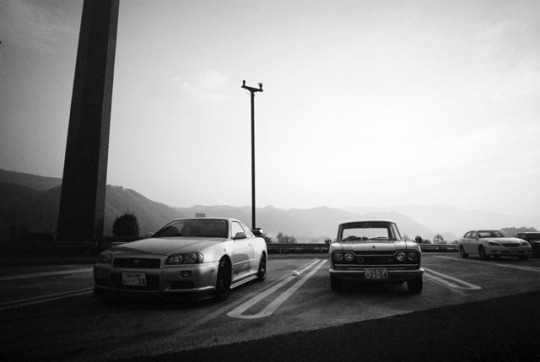
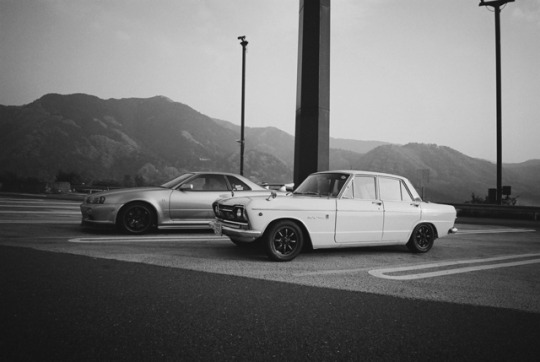

R34 and GT-B @ Chuo Highway
#Carsonfilm#Ilford XP2#Ricoh GR1#nissan#skyline#skyline r34#Prince Skyline GT-B#kyusha in the wild#Nissan family
73 notes
·
View notes
Photo
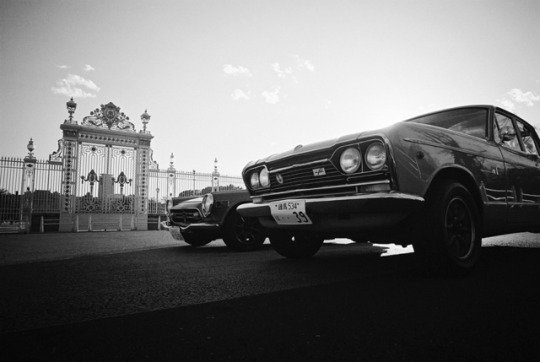
The S and the B @ Geihinkan
#Carsonfilm#Ilford XP2#Ricoh GR21#Prince Skyline GT-B#Honda S800#kyusha in the wild#迎賓館前#tokyo#showa cars
27 notes
·
View notes
Photo
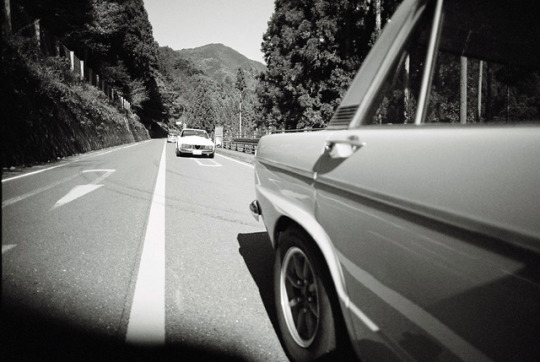
Prince Skyline 54B chased by Alfa Romeo Junior Zagato @ Okutama
#Carsonfilm#ilford xp2#ricoh gr21#Prince Skyline GT-B#alfa romeo#Zagato#Alfa Romeo Junior Zagato#kyusha in the wild#okutama
35 notes
·
View notes
Photo



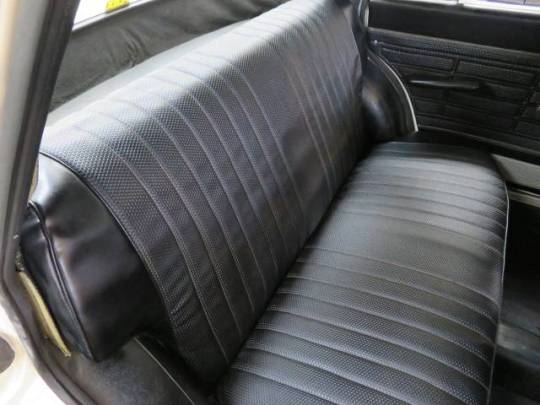
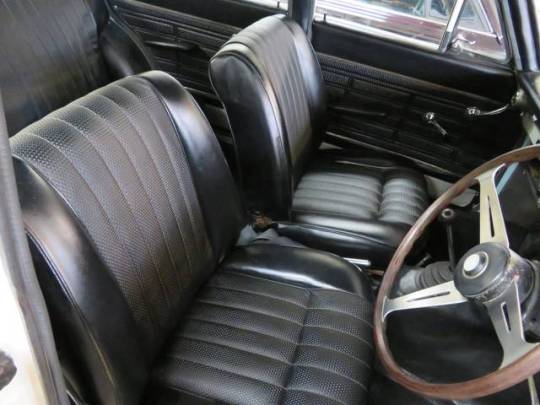
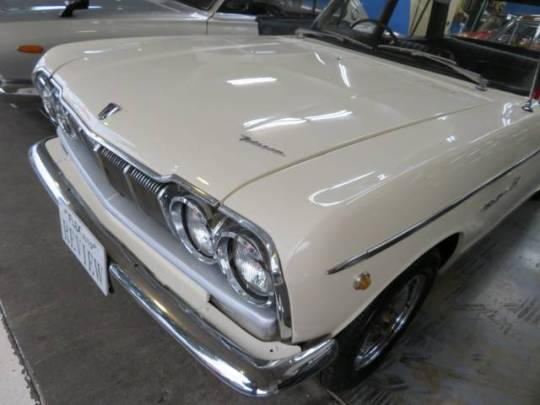
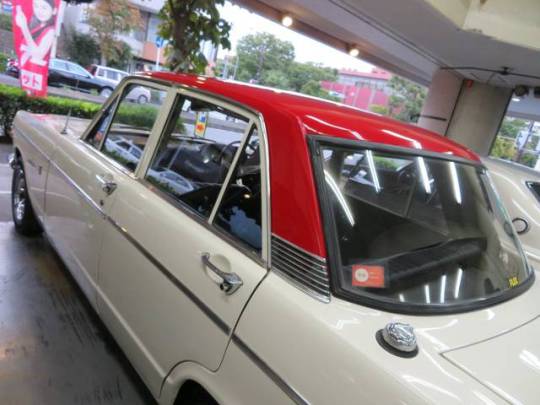
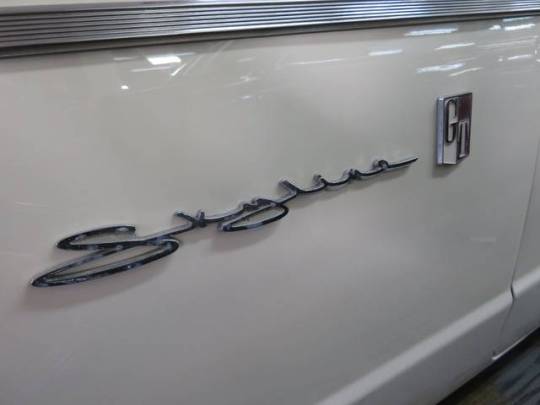
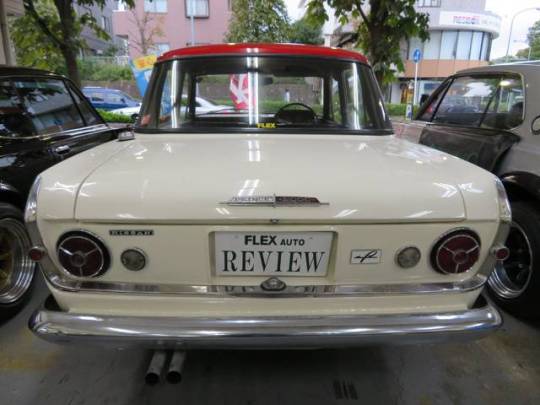
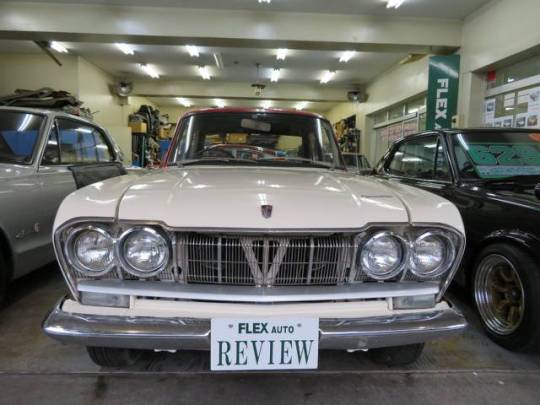
1967 S54 Prince Skyline GT-B. This car was a race special version of the S50 Prince Skyline. The wheelbase was extended by 8" to enable fitment of the G-7 OHC 1988cc straight 6 from the S41 Gloria. On the GT-B versions the cars came with three Weber 40DCOE-18 carbies(giving 125ps), a limited slip diff and a five speed ZF gearbox. Even though they were only marketed as a GT-B they were the car that made the Hakosuka KGC10 GTR possible due to their successes in racing. Without this car there would be no GTR skylines.
27 notes
·
View notes